I grew up driving through Aberdeen, WA on the way to my grandparents’ house on the coast in Grayland. Nestled right next to Aberdeen is the small city of Hoquiam. Aberdeen and Hoquiam are often seen as one entity, but I get the impression that they have a rivalry that may or not be friendly. In Hoquiam is a treasure of a baseball stadium, which I only learned about, when I came across a schedule for the minor league Grays Harbor Gulls, after my grandparents had sold their house on the coast and my family no longer drove through the cities at the mouth of Grays Harbor.
I’ve since resumed making trips to the Grayland, and driving through Aberdeen. One our annual trip last month, I finally stopped by the stadium that the Grays Harbor Gulls once called home.
A couple surprises were in store. First, I had hoped to watch a baseball game there! Through the beginning of July the Cascade Collegiate Baseball League had played all their games at Olympic Stadium. It was a college wood-bat summer league that played during June and July, and a showcase team that played other college wood-bat teams in the northwest. Although their schedule indicated they would have games the day we were there, the stadium was totally deserted. The last social media post from the league was on July 11th, so it’s possible the league just ran out of money and had to shut down.
The other surprise? In every picture I’d seen online the stadium was gray and maroon. When we got there, it looked like this:
It looked recently painted, and the roofing material looked new. There was no signage on it anywhere so work on it was probably in progress. I tried to get some pictures, but it was tough with gates all around. But here’s what I got:
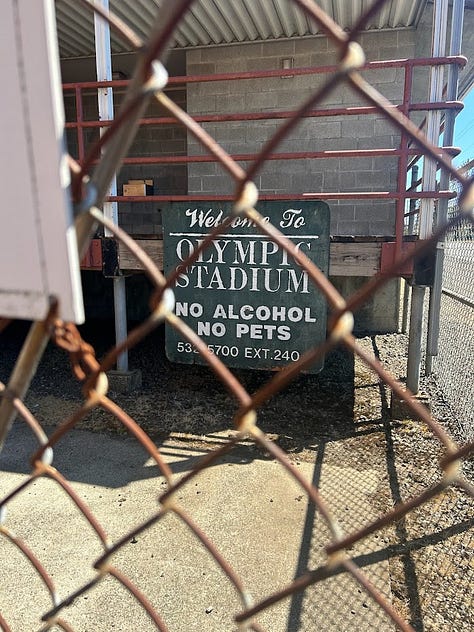

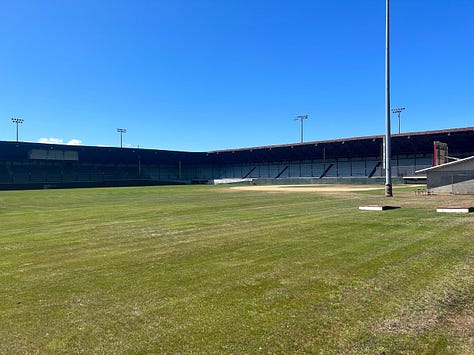
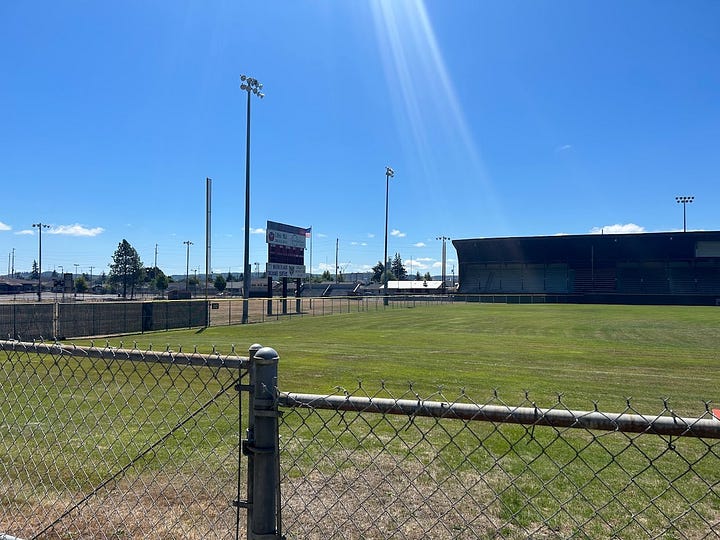
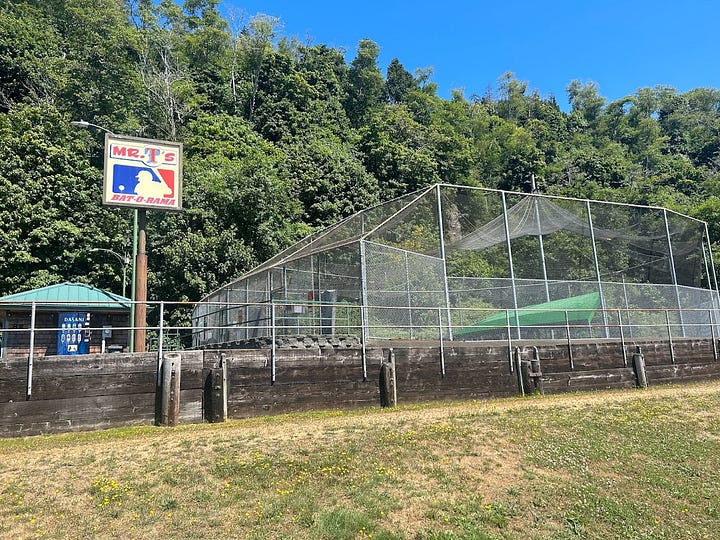
An interesting thing about the field is that home plate isn’t in the corner where to two sides of the grandstands meet, behind the entrance. It’s over in what would normally be left field. The open side of the field faces east to shield spectators and players from the wind coming off the Pacific Ocean to the west. Perhaps those winds are the reason for the baseball field orientation. On the same property were Little League fields and a batting cage.
So why did I want to see this stadium, and why did I trapse around taking pictures of it? I’m glad you asked.
Olympic Stadium is on the National Register of Historic Places. This is for a couple reasons. One, it is the “best-preserved and largest standing wooden grandstand in the United States” and “still retains its original location, design, setting, materials, workmanship, feeling and association. It is still being used for its original purpose and serves as a point of pride for the community.”1 The stadium was built from old growth fir and covered in cedar shingle siding. It is a large structure, built for football and other events as well as baseball games. The stadium originally seated 10,000, but renovations have lowered the capacity to 7,500 now.
The stadium is also significant because it was built as part of the Works Progress Administration (WPA) during the Great Depression. The WPA was part of the New Deal relief efforts. It employed the unemployed by putting them to work building public infrastructure. According to the National Register of Historic Place Registration Form, which details the history of the stadium, the project employed nearly 400 workers, and was supported by area industries. The old growth fir was logged in Clallum County, at the top of the Olympic Peninsula, then milled in Hoquiam. Hoquiam-based Polson Lumber & Shingle Mills donated board lumber to the project. The original stadium turf came from the Beachway Golf Course in Aberdeen.
Before Olympic Stadium was built, the cities of Aberdeen and Hoquiam shared Electric Park, which sat on the border between them. Olympic Stadium was built further into Hoquiam, so Aberdeen decided it didn’t want to contribute to the project. Nonetheless, construction began in May 1938, and the stadium wasn’t officially finished until March 1939. However, it was close enough in November 1938 to host the annual Hoquiam and Aberdeen high schools football game on Thanksgiving (Hoquiam won, if you’re keeping score at home).
The stadium is both a fantastic example of the work done by the WPA, and unique, even for the time. The only known stadium that compares is the Jay Littleton Ballpark in Ontario, CA, but that stadium is much smaller, holding 3,500 spectators. Olympic Stadium was much larger than most stadiums built in a town of its size. In 1938, Hoquiam had nearly 11,000 residents; almost all of them could have attended an event at the stadium (the population as of 2021 is just under 9,000, still not too far off from the capacity of 7,500).
Grays Harbor county was built on the logging industry. A still-standing and used all-wood stadium is fitting.
Some more information on the stadium:
The registration form for the Nation Register of Historic Places has a detailed history of the stadium and the effects of the WPA in Grays Harbor County. Most things I’ve read about the stadium seem to quote from the document.
Digital Ballparks has several pictures and information on the stadium.
The City of Hoquiam’s website has a history and pictures.
The Polson Museum in Hoquiam has pictures of events at the stadium and the construction.
The National Register of Historic Places Registration Form: https://s3.amazonaws.com/NARAprodstorage/lz/electronic-records/rg-079/NPS_WA/06000731.pdf




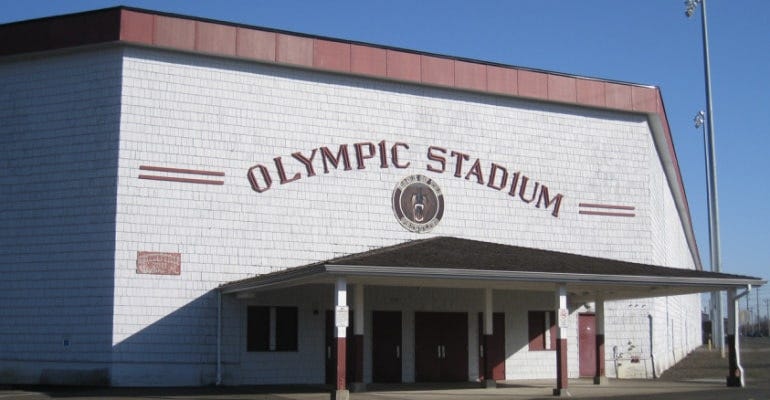
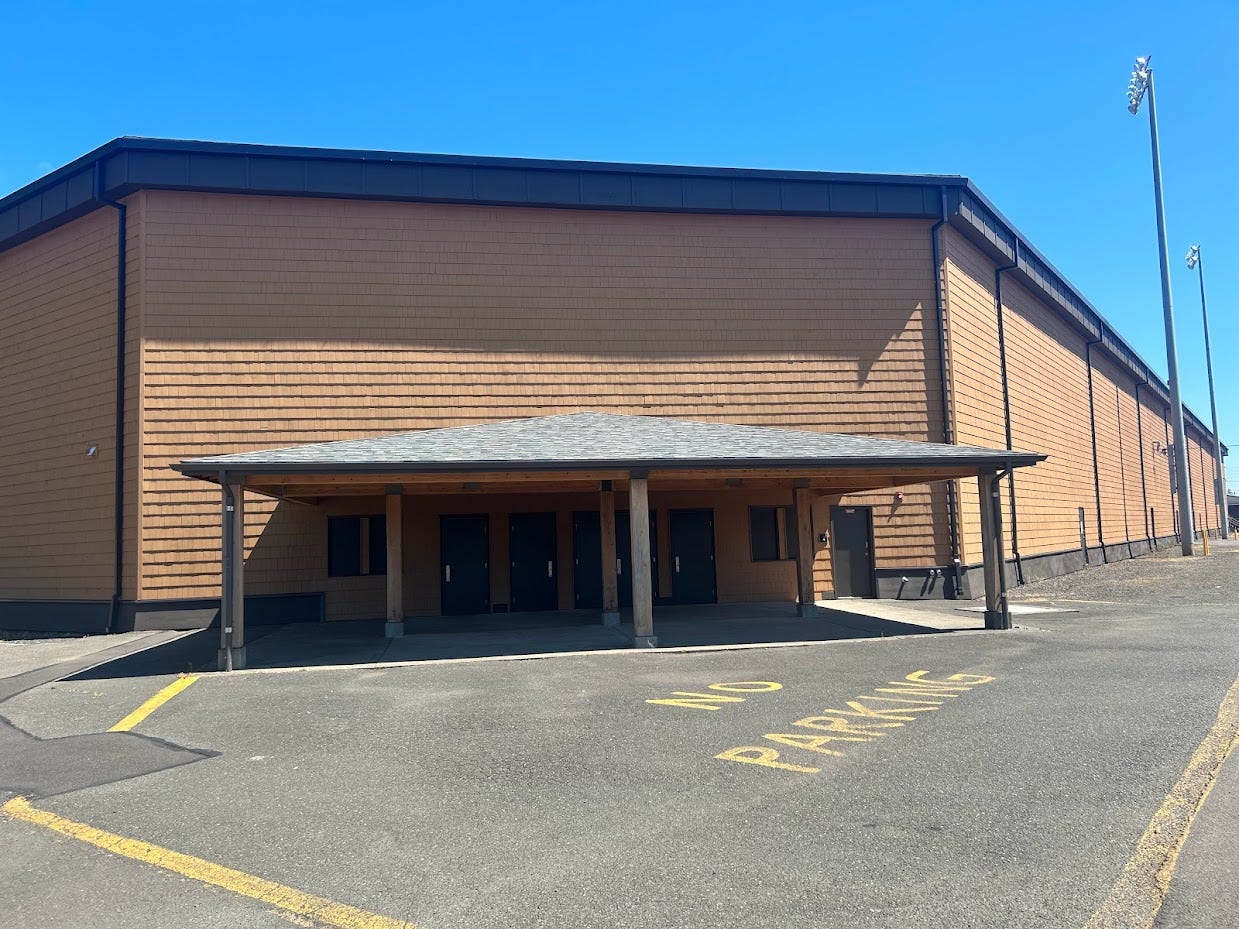
Just found this - this is a great post. Hope you can find an opportunity to actually get into the ballpark sometime. I love the look of the wraparound roofed single deck.
Also, there's a lesson here for all of us -- never put off until tomorrow the ballgame you can see today, because it might not be there tomorrow.
This is lovely :)
Excellent work